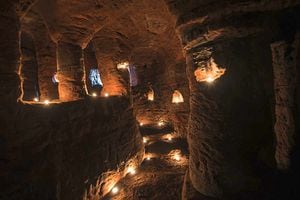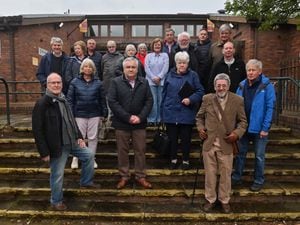Shropshire caves likely to have Knights Templar origins, says historian
An historian with knowledge of the Knights Templar today claimed the caves near Shifnal were built by the order, making them several hundred years old.

Gretchen Cornwall has written an historical account of the order's survival to the present day, called The Secret Dossier of a Knight Templar of the Sangreal.
Following new photographs of the cave by photographer Michael Scott, she has said they caves are genuine and were probably visited by a head of the order, who was executed in 1314.
Previously it had been claimed that the caves may have been built by a wealthy family in the 19th century.
But Ms Cornwall said: "There is almost no information available to the public regarding the Caynton Templar Church as it has been erroneously labelled as a recent folly.
"The head of the Order, Jacques de Molay, was executed on 18th March 18, 1314. As the Grand Master of the Knights Templar it was his duty to visit the major preceptories of the Order. He visited Garway just to the south in 1294 and would have secretly visited the Caynton Templar Church as well."
The Caynton Caves, hidden in dense woodland near Shifnal, were apparently carved out of sandstone by followers of the Knights Templar. Mr Scott, from Birmingham, set out in search of the historical wonder after seeing a video of it online.Some of the sandstone chambers are so tiny those exploring have to enter on hands and knees.
The Knights Templar were a wealthy order of knights created in 1129 by the Pope who wore distinctive white mantles with a red cross over their armour.
Its original purpose was to protect pilgrims from bandits on their journey to Jerusalem.
It is said that the hand-made caves in Shropshire were used as a secret place of worship.
Mr Scott, 33, from Birmingham, said: The 33-year-old said: "I traipsed over a field to find it. If you didn't know it was there you would just walk right past. It's s probably less than a metre underground, so it's more into the field than under it. Considering how long it's been there it's in amazing condition, it's like an underground temple."





